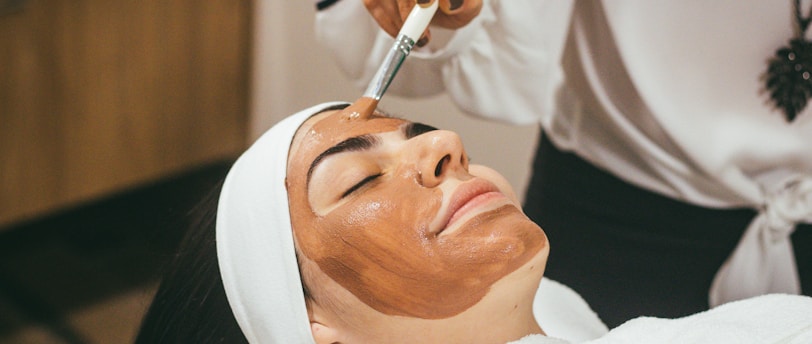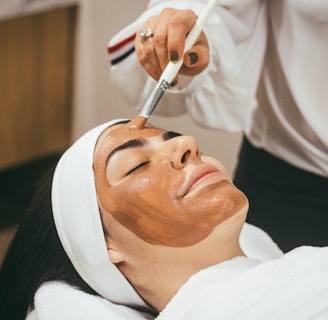Cosmetic Chemical Peels: The Low-Down on These Non-Surgical Treatments
NON SURGICAL
3 min read


What are chemical peels?
Cosmetic chemical peels are treatments designed to improve the appearance of the skin. They work by applying a chemical solution to the skin, causing it to exfoliate and eventually peel off. The three main types of chemical peels are:
Superficial peels: Target the outer layer of skin (epidermis).
Medium peels: Reach deeper into the dermis.
Deep peels: Target the dermis extensively and require longer recovery.
What can't chemical peels do?
Chemical peels are not a solution for all skin issues. Here’s what they can't address:
Acne scars: While they can reduce their visibility, deep scars may require specific scar treatments.
Active infections: Chemical peels should not be performed on inflamed or infected skin.
Severe skin conditions: These include conditions like rosacea or eczema.
Permanent removal of excess fat: Chemical peels improve skin texture but won't affect fat deposits - cheek liposuction is a surgical face procedure that could be more suitable.
Who is a good candidate for chemical peels?
Ideal candidates include individuals who:
Have specific skin concerns such as aging, sun damage, or uneven skin tone.
Are in good health and free from significant health issues that could affect skin recovery.
Have realistic expectations and understand what peels can and can't achieve.
How much do chemical peels cost in Vietnam?
The cost of chemical peels in Vietnam is determined by the type of peel, as well as the clinic, and the skills and experience of the person undertaking the procedure.
Superficial peels: Range from USD40 - USD120.
Medium peels: Range from USD120 - USD240
Deep peels: Typically cost USD240 and above.
Packages: Some clinics offer package deals, which can be cost-effective.
How should I prepare for a chemical peel?
Preparation for chemical peel treatment involves several essential steps that ensure optimal results and a smooth experience. Typically you can expect to consider the following:
Consult with a qualified cosmetic surgeon of dermatologist to discuss your goals. The doctor will take measurements, evaluate your health, and may take photos of the area before treatment.
Provide a detailed medical history, including current medications and allergies, any previous surgeries or treatments or medical conditions.
Follow all pre-operative instructions provided by your surgeon, such as avoiding sun exposure for at least 2 weeks before, and stopping certain medications (retinoids or any acne medications).
Discuss skin care routines pre and post-treatment. Keep your skin well-hydrated ensure skin is in optimal condition.
Here at Vietnam Surgeons we also offer further information on how to prepare for any procedure in Vietnam, and how to ensure you have the most comfortable recovery.
What are the steps of a chemical peel procedure?
A chemical peel procedure will usually include:
Skin cleansing: To remove any makeup and impurities.
Application of the chemical solution: Carefully applied based on peel type.
Monitoring: The dermatologist monitors skin reaction throughout.
Neutralizing: In some cases, solution is neutralized with water.
Aftercare: Post-treatment care instructions are provided.
What should I expect during my chemical peel recovery?
Recovery from a chemical peel will vary based on the peel depth, but some typical things to expect are:
Redness: Especially common with medium and deep peels.
Peeling: May start from a few days to a week post-treatment.
Moisture: Keep skin hydrated to assist recovery.
Follow-up: May be necessary for skin assessment and guidance.
What results can I expect after a chemical peel?
The intended results that can occur include:
Improved skin texture and tone.
Refinement of minor imperfections.
Increased collagen production leading to youthful skin.
Results manifest fully within weeks and can last for months.
Risks & side effects of chemical peels
As with any medical or cosmetic procedure, there can be risks and the potential for certain side effects:
Skin irritation and redness.
Scarring: Particularly with deep peels.
Changes in skin color: Hyperpigmentation or hypopigmentation.
Infection: Risk increases if aftercare is not followed.
Chemical peel combinations
Some individuals may combine peels with other procedures:
Laser treatments: For enhanced skin rejuvenation.
Microdermabrasion: For additional exfoliation.
It is important to discuss your intended outcomes with a professional to ensure the options available suit you. Remember, some clinics offer package deals when combining procedures.
Other non-surgical options
At the same time, there are other non-surgical alternatives that can be undertaken instead of a chemical peel if a peel is not the desired procedure. These include:
Microneedling: Stimulates collagen without chemicals.
Facials: Less invasive, focusing on hydration and glow.
Retinol treatments: Over-the-counter options for skin renewal.
So, should you get a chemical peel?
Deciding whether to get a chemical peel requires careful consideration of several factors. First, it's essential to identify your specific skin concerns, such as acne scars, uneven texture, or hyperpigmentation, and clarify your desired outcomes.
A consultation with a qualified surgeon or dermatologist is crucial, as they can provide personalized advice based on your skin type and condition. During this consultation, you'll also gain a comprehensive understanding of the potential risks and benefits associated with the procedure. Weighing these aspects will help you make an informed decision that aligns with your skincare goals, ensuring that a chemical peel is the right choice for you. Ultimately, a thoughtful approach will lead to the best possible results for your skin.
